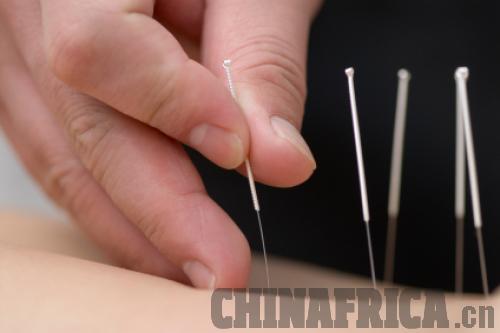| 
Around 2,400 years ago, there was a well-known Chinese doctor named Bian Que. He traveled from place to place, practicing medicine and curing patients. One day while passing through the ancient Chinese state of Guo, he heard about the sudden death of the state's prince. The news led him to inquire about the case with an official close to the deceased monarch.
Judging what he heard from the official's story, Bian Que came to a surprising conclusion. "The prince is not dead," he said. "I can bring him back to life." The court was shocked. Bian Que proceeded to take out several stone needles, using them to treat the prince who soon woke from his "death." This incident earned Bian Que the famed reputation of being a "magic doctor."
Today, the treatment that the magic doctor used on the prince is known as acupuncture. Although his stone needles have been replaced with stainless steel versions, the theory behind their application remains unchanged. Acupuncture treats patients by manipulating thin, solid needles that have been inserted into particular points along the skin to regulate vitality through stimulation. Another method under the theory is moxibustion, wherein acupuncture practitioners stimulate circulation by warming acupuncture points.
As a traditional and "magical" medical treatment, acupuncture can be widely applied to cure many kinds of difficult diseases. It is especially effective in the treatment of abdominal pain, pain in the legs and rheumatoid arthritis, as well as functional disorders like bodily and facial paralysis. For thousands of years, acupuncture was one of the most popular treatments in China, helping to preserve and multiply its population.
Today, acupuncture is practiced in many hospitals and medical institutions. The acupuncture departments in major hospitals are often crowded, filled with long waiting lines. The practice has begun to be used to address a wider range of health problems, such as obesity control, facial treatments and eyesight issues.

Acupuncture is a national treasure in China now shared with the rest of mankind. In the sixth century, acupuncture traveled to Japan and Korea, absorbing additional elements and branching off into different schools of treatment. To date, acupuncture practitioners can be found in 140 countries and regions around the world, working to help people improve their states of health. In 2010, these practitioners landed the United Nations Educational, Scientific and Cultural Organization's "Representative List of Intangible Cultural Heritage of Humanity."
Starting in 1960, China began sending medical teams into Africa. Many members on these teams have been doctors of traditional Chinese medicine who are good at acupuncture. Africans cured through the treatments became fans of it, and young people began traveling to China to study the skill. Segu Kamala, a young Guinean who came in 1973, was one such student. Returning to Guinea after finishing his Chinese traditional medicine studies, he became his country's first acupuncture practitioner.
Kamala's efforts to promote acupuncture led to its acceptance in the remote African nation. In 2000, the medical school at Conakry University of Guinea listed acupuncture as a compulsory course. Kamala was appointed dean of a department of acupuncture treatment at the school. "Acupuncture is safe, convenient and cheap, with no side effects," he said. "It has brought hope to many suffering Guineans."
Acupuncture is becoming an important practice in African countries other than Guinea. In 2000, the South African government passed a law legalizing the practice of traditional Chinese medical science, which was followed by its fast growth in the Rainbow Nation. Ibrahim Mahmoud, the head of South Africa's Institute of Chinese Medical Science and Acupuncture, says that traditional Chinese medicine has a bright future in Africa. It's just a matter of time, he believes, before its popularity balloons, as it did in China all those years ago. |